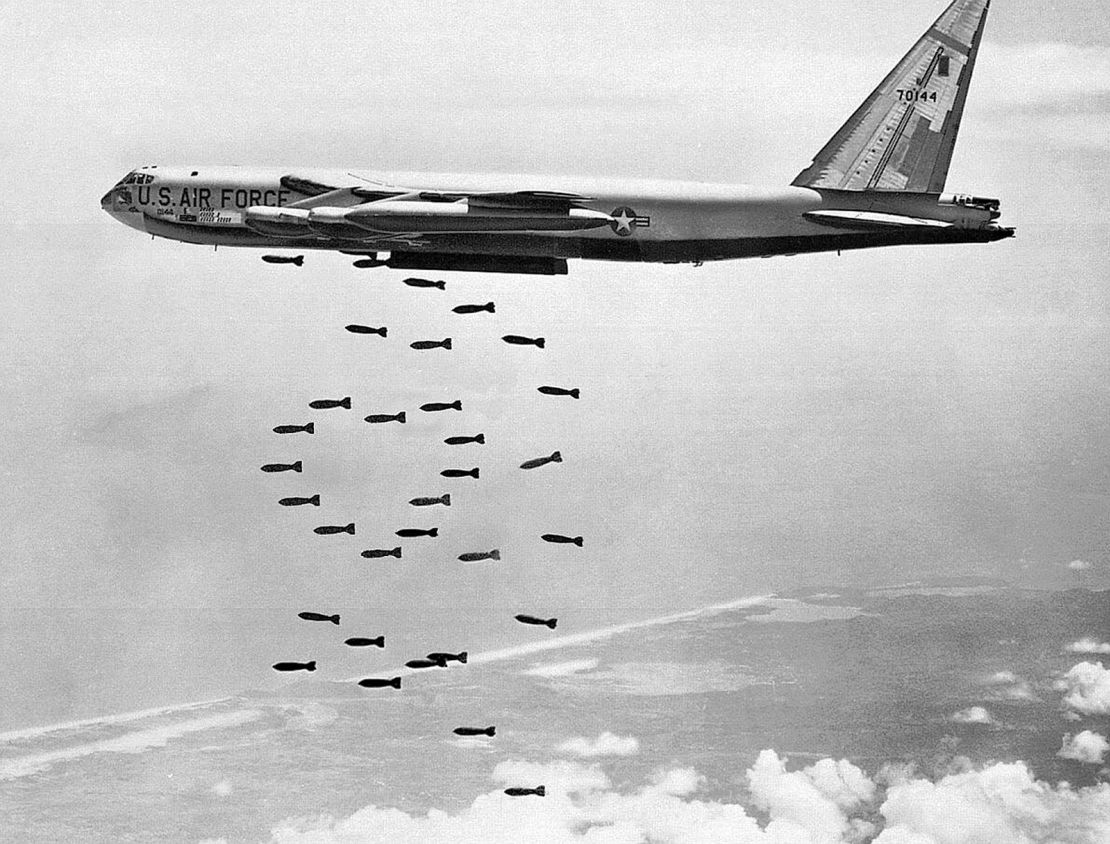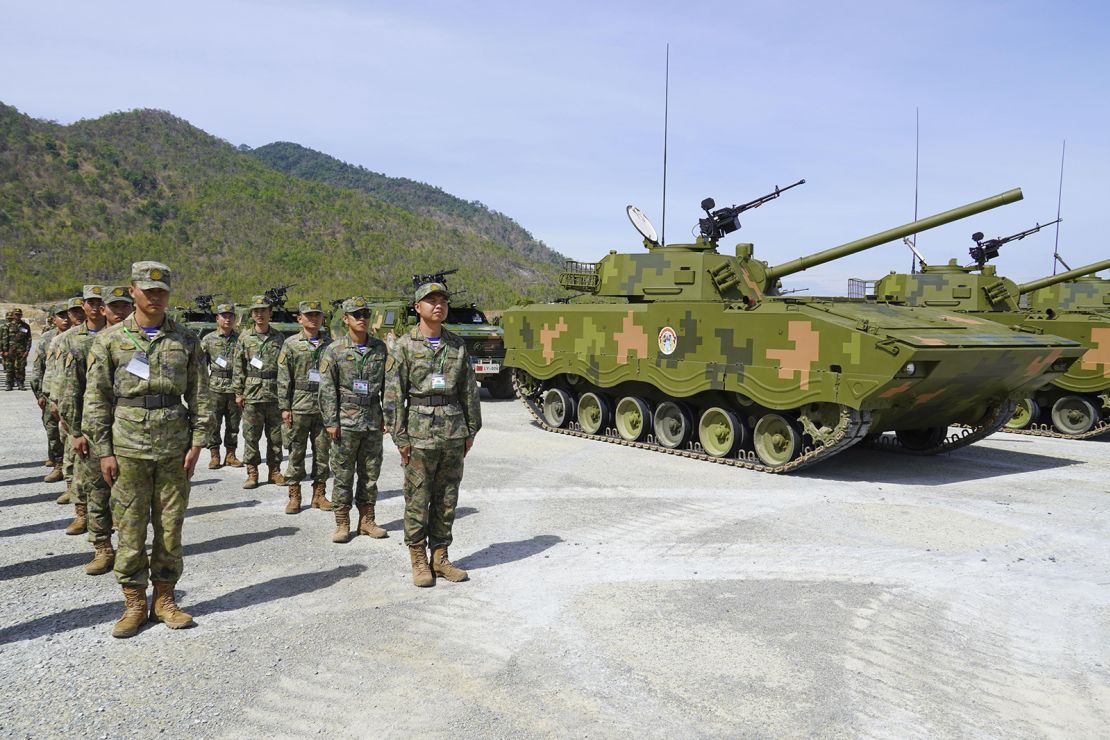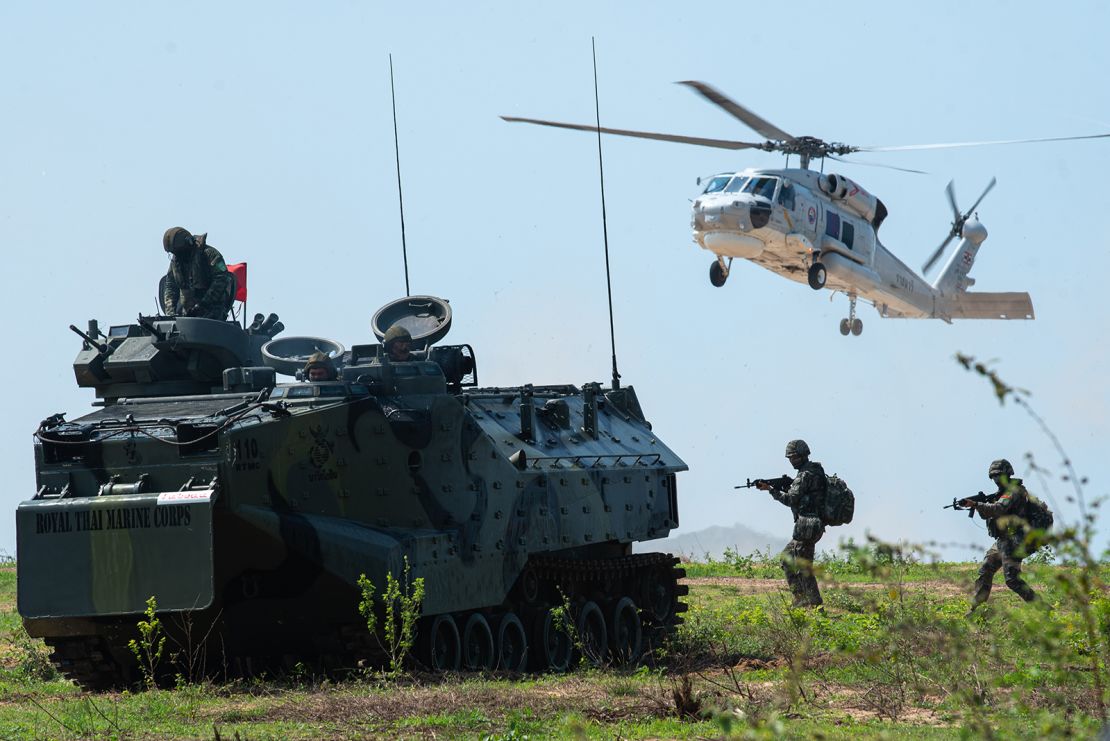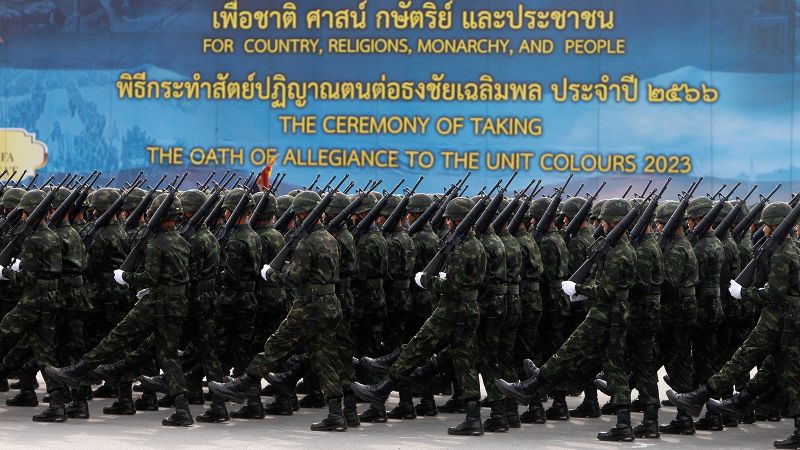CNN
—
The deadly conflict on the Thai-Cambodian border pits a longtime United States ally with decades of experience against a relatively young armed force with close ties to China.
Bangkok and Phnom Penh are fighting over territory disputed since colonial power France drew the border between them more than a century ago.
More than a dozen people have been reported killed and more than 100,000 civilians evacuated since fighting began on Thursday.
Here’s a look at the histories and capabilities of the two sides.
Numbers favor Thailand
Thailand’s military dwarfs that of neighboring Cambodia, both in personnel and weaponry.
Thailand’s total of 361,000 active-duty personnel spread across all branches of the kingdom’s military is three times Cambodia’s. And those troops have at their disposal weaponry their Cambodian counterparts could only dream of.
“Thailand has a large, well-funded military and its air force is one of the best equipped and trained in Southeast Asia,” the International Institute for Strategic Studies (IISS) wrote in its “Military Balance 2025” look at the world’s armed forces.
The Lowy Institute’s Asia Power Index for 2024 ranks the Thai military seven spots higher than Cambodia’s in its measure of the military capabilities of 27 nations in the region. Thailand ranks 14th, Cambodia 23rd.
Meanwhile, a 2024 ranking of the military capabilities of 27 regional nations by the Lowy Institute places Thailand at 14th, to Cambodia’s 23rd.
Such a disparity is perhaps to be expected, given Thailand has four times as many people as Cambodia, and a GDP more than 10 times larger. Unlike Cambodia, Laos and Vietnam – it escaped the ravages of the wars that engulfed the region in the second half of the 20th century, and the European colonialism that preceded them.
Overall, with factors including military, economic, diplomatic and cultural power weighed in the Lowy Asia Power Index, Thailand is ranked 10th, considered a middle power, just behind Indonesia but ahead of countries including Malaysia and Vietnam.
Lowy ranks Cambodia as a minor power in Asia, grouped with countries such as Bangladesh, Sri Lanka and Laos.
Thailand has strong US ties, global outlook
Thailand’s military has long been a major player in the kingdom’s politics. The country has for years been dominated by a conservative establishment comprising the military, the monarchy and influential elites.
Generals have seized power in 20 coups since 1932, often toppling democratic governments, according to the CIA World Factbook, and the military portrays itself as the ultimate defender of the monarchy.
Thailand is a United States treaty ally, a status dating back to the signing of the Southeast Asia Collective Defense Treaty, also known as the Manila Pact, in 1954, according to the US State Department.
During the Vietnam War, Thailand hosted US Air Force assets at some air bases, including B-52 bombers, and tens of thousands Thai troops fought on the side of the US-backed South Vietnam against the communist North.

The strong ties between Washington and Bangkok have endured. Thailand is classed as a major non-NATO ally by the US, giving it special benefits that have enabled it to enjoy access to decades of US support for its weapons programs.
Thailand and the US Indo-Pacific Command co-host the annual Cobra Gold military exercise, which began in 1982 as joint drills with the US but has since added dozens of other participants. It’s the longest-running international military exercise in the world, according to the US military.
Besides Cobra Gold, Thai and US forces hold more than 60 exercises together, and more than 900 US aircraft and 40 Navy ships visit Thailand yearly, the US State Department says.
Despite all that history with Washington, these days the Thai military tries to maintain a more neutral approach to military policy, increasing ties with China in the past decade.
Not wanting to rely on any one country as its arms supplier, it has also developed a strong domestic weapons industry, with the help of countries such as Israel, Italy, Russia, South Korea and Sweden, the “Military Balance” report says.
Cambodia’s military is young in comparison to Thailand’s, established in 1993 after forces of the communist government were merged with two non-communist resistance armies, according to the IISS.
“Cambodia’s most important international defense links are with China and Vietnam. Despite a traditional reliance on Russia for defense equipment, China has emerged as a key supplier,” the IISS says.
Beijing has even developed a naval base in Cambodia. The Ream Naval Base, on the Gulf of Thailand, would be able to host Chinese aircraft carriers, according to international analysts.
Cambodia and China completed the seventh edition of their annual Golden Dragon joint military exercise in May, which was touted as the largest ever and featured live-fire training scenarios.

It’s a relationship that’s expected to reach “a new level and achieve new development” this year, according to a February report on the People’s Liberation Army’s English-language website.
“China and Cambodia are iron-clad friends who… always support each other. The two militaries enjoy unbreakable relations and rock-solid brotherhood,” Chinese Defense Ministry spokesperson Senior Col. Wu Qian told a press conference in February, when asked about possible fissures in relations.
Cambodia’s military needs the support.
“Cambodia currently lacks the ability to design and manufacture modern equipment for its armed forces,” the IISS report says.
Bolstered by years of US support, the Royal Thai Air Force is well equipped, with at least 11 modern Swedish Gripen fighter jets and dozens of older, US-made F-16 and F-5 jets, according to the IISS. Cambodia has no combat-capable air force to speak of.
On the ground, Thailand has dozens of battle tanks, including 60 modern, Chinese-made VT-4 tanks, and hundreds of older, US-made tanks. Cambodia has about 200 old Chinese- and Soviet-made tanks, the “Military Balance” shows.

The Thai army boasts more than 600 artillery pieces, including at least 56 powerful 155mm weapons and more than 550 105mm towed guns. Cambodia has only a dozen 155mm guns with around 400 smaller towed artillery pieces, according to IISS figures.
In the air, the army has US-made Cobra attack helicopters as well as 18 US Black Hawk transports. Cambodia has only a few dozen older Soviet and Chinese transport helicopters.
Hawaii-based military analyst Carl Schuster, a former director of operations at the US Pacific Command’s Joint Intelligence Center, said that while Thailand has the numerical and qualitative military advantage, Cambodia has at least one thing in its favor – the actual land along the disputed border.
“Terrain favors access from Cambodian territory to the disputed area,” Schuster told CNN.
And with Cambodian forces allegedly laying landmines and booby traps in the disputed area, Thailand can be expected to rely on longer-range weaponry, he said.
“The Royal Thai Air Force is superior and their special forces are superior,” Schuster said. “I think the Thais will prefer to emphasize air power and long-range firepower in the conflict.”


